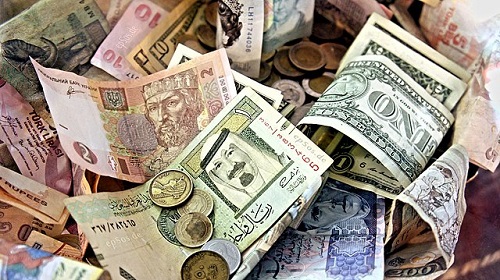Difference between Monetary and Nonmonetary Assets
In a monetary economy, there are many different ways to calculate value, including money, commodities, inventory, financial capital, investments, and even intangible items such as patents, copyrights, and even goodwill.
One of the most common ways to delineate these value-based classes is to discuss them in terms of monetary and nonmonetary assets.
- Definition
The difference between monetary and nonmonetary assets is simply the way that each is classified.
Assets themselves are any resources with economic value. Monetary assets are always tangible assets. Current assets also fall into the monetary classification. Examples that would qualify as monetary assets are cash, short-term investments, deposits and bank accounts, investment accounts (including net investments in leases, investments in debt securities and even deferred tax assets).
Another asset considered to be monetary is accounts receivable, or notes receivable. This is a promise of payment from an individual, which is likely to occur in a short period of time.
Inventory, in terms of both the raw materials and products that are in various states of production are also considered to be monetary assets in many settings. However, in certain circumstances, such as when inventory would not be able to be sold quickly, it would be considered a nonmonetary asset; there is some leniency in how this class would be determined based upon the industry that is being referenced.
Non-monetary items can be of a varied nature. Many different things can be considered non-monetary assets. The most common cited one is property, which can include plant and equipment for commercial companies and any personal property that an individual owns.
Intangible assets are also included in this group, examples of which are patents, copyrights, franchises, goodwill, trademarks and trade names. These types of assets can be hard to determine the value, but are generally amortized to expense over 5 to 40 years (except for goodwill).
Investments in associates and equity investments, such as shares, are also considered nonmonetary assets. Biological assets would also be considered to fall into this group. Items such as advances and prepayments and even the value of websites are difficult to determine as either monetary or nonmonetary in nature.
- Liquidity
As you can see, cash and currency do not count as the only types of monetary assets. The primary determinant of whether something is considered a monetary or a nonmonetary asset is its liquidity.
Liquidity refers to an asset’s ability to be sold rapidly and with minimal loss of value. Those assets that are liquid in nature tend to be considered monetary assets.
An illiquid asset is one that is not readily salable unless there is a drastic price reduction, although sometimes not at any price. This can be due to the uncertainty about its value or the lack of a market in which it is regularly traded.
Liquidity is not necessarily a fixed thing though; speculators and market makers can contribute to the liquidity of any given market. Liquidity of assets affects their prices or anticipated returns.
Investors generally require higher returns on assets with low liquidity as a way to compensate for the higher cost of trading in these assets. Essentially, the higher an asset’s liquidity, the higher its prices, but the lower its expected return. Managing liquidity is a daily process, yet despite this the liquidity of monetary and nonmonetary assets rarely changes.
Because monetary assets are relatively easy to be sold, they may sometimes be considered current assets. These are ones that are expected to be converted to cash or consumed within a year of an operating cycle. These include all of the monetary assets already listed along with any prepaid expenses, since all of these assets would be continually turned over in the course of normal business activity.
There are more distinctions in the types of nonmonetary, illiquid assets that exist. Some would be considered long-term investments, others are fixed assets, such as property and equipment, while others are intangible (patents, goodwill, etc.) and like monetary assets, there are also tangible nonmonetary assets. These could range anywhere from artwork, gold, wine, buildings and real estate.
- Cash conversion/changing value
Another big difference between monetary and nonmonetary assets lies in how they are quantified and how value changes.
With most assets, the value is represented in a company’s financial statements, but with nonmonetary assets they are also included in a company’s balance sheet.
The standard acceptable measure is the dollar value of each asset. Monetary assets are easy to convert to a dollar value generally. Nonmonetary assets can be quite a bit more subjective in their valuations. This is especially true for those that are intangible, such as a proprietary technology or any other type of intellectual property.
The other distinction also occurs as a part of the cash conversion process. While monetary assets can be easily quantified as a fixed dollar amount, the nonmonetary assets are much more subject to changes over time that happen in accord with the economic and market conditions and any other forces that may influence the value.
One example would be the level of competition in a given market. As it changes, the value of inventory also changes forcing the company to adjust its market prices as a response to either competition from other companies or demand for their product.
Other examples would include broad economic forces, such as inflation or deflation, which have the ability to greatly impact the value of nonmonetary assets separate from individual market trends.
- Difference between Condition and Warranty - October 21, 2017
- Difference between Monetary and Nonmonetary Assets - September 26, 2017
- Difference between Turkey and Chicken - September 16, 2017
Search DifferenceBetween.net :
Leave a Response
References :
[0]https://en.wikipedia.org/wiki/Currency_intervention


